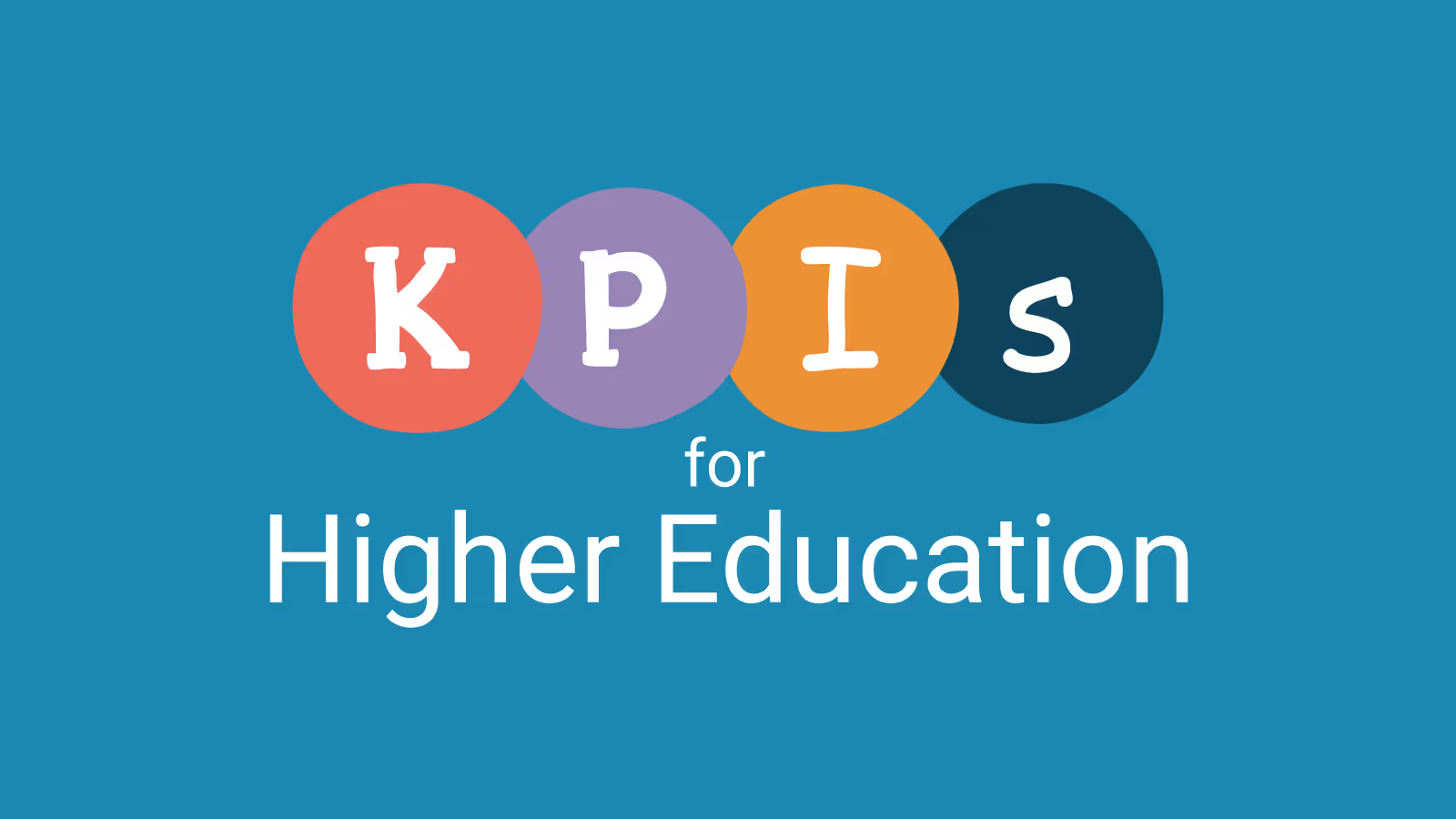KPI in Education Overview
Higher education KPIs are measurable values used by educational institutions to measure and track their progress on specific business objectives.
Furthermore, these KPIs help education institutions monitor and evaluate how well they're performing, and direct their policy formulation and target setting. We've been compiling a whole bunch of KPI examples as part of our KPI examples mini-series. KPIs in higher education are as important as ever.
The education industry changed in 2020 as a result of Covid-19 and those institutions without an adaptable strategic plan found themselves in financial and operational trouble.
Check out Cascade's KPI features and case studies of Cascade Clients within the Higher Education industry!
This post provides 11 of the most common higher education KPIs, and we also include a brief description of why you may want to use each. We suggest you pick at least 2 KPIs for each of your key business objectives.
We've broken the 11 KPIs up into 4 categories including, financial KPIs, administrative/enrollment KPIs, student outcome KPIs, and research KPIs. If you need help creating your very own KPIs, check out our easy 4 step formula for creating great KPIs.'
Financial KPIs
Financial KPIs are the most widely used category among higher education institutions. They include measures regarding revenues, expenditures, assets, liabilities, fund balances, and fundraising. We've only included 4 in this category, but there are many more!
Excess of fund revenues over fund expenditure
The excess of fund revenue after fund expenditure has been deducted allows educational institutions to calculate the profit they've generated for the period. This surplus enables higher education institutions to invest in their facilities, infrastructure, and teaching so that they can provide a better service.
This KPI is designed to inform the operating efficiency and cost productivity of the institution's core activities.
KPI Example: Increase excess of fund revenue over fund expenditure to $50 million by 12/12/2025
Scholarship expenditures as a percentage of total fund revenues
This KPI looks at the percentage of funds generated by educational institutions that are being directed towards scholarships grants.
Universities and other higher education institutions should try and maintain a percentage of their total fund revenue dedicated to scholarship grants.
KPI Example: Increase scholarship expenditure from total fund revenue to 5% by 12/08/2025
Endowment market value
Endowments are an integral part of the financial structure of many educational institutions. Therefore, tracking the market value of endowments can provide a fairly good gauge of their financial well-being.
These assets provide educational institutions with the ability to fund their operating costs with sources other than tuition and ensure a measure of stability by using them as a potential rainy-day fund.
KPI Example: Increase endowment market value by $500,000 by 06/12/2025
Administrative spending per student
This KPI measures the amount of money universities spends on administrative services on average for each of their enrolled students.
Keeping on top of per-student spending is crucial to ensure the balance of spending across essential services is appropriate.
KPI Example: Decrease average administrative spending per student to $25,000 per student by 15/08/2025
Admissions/Enrollment KPIs
Students are the lifeblood and purpose of an educational institution - it's key to understand how they are passing through the organization.
First year to third year retention rate
This KPI measures and reports on the percentage of first-year students who complete 3 successive years of study with the university. There are many reasons a student might drop out and not make it from the first year to their third.
However, a university with low retention rates can signify an institution that doesn't take good care of its first-year students.
KPI Example: Increase first year to third-year retention rates to 90% by 12/12/2025
Admin rate
The admin rate is a KPI which measures and informs management of the percentage of those who applied to the university and who were offered acceptance to study.
KPI Example: Increase admin rate to 95% by 24/12/2025
Student outcome KPIs
The educational institution exists to provide the best possible service to its students, so it's essential to measure success in this area.
Student to teacher ratio
Measure how many students are admitted per class, per teacher. If you have a low student to teacher ratio, you're creating the best opportunity to give each student the attention they need.
This is something that can be your unique selling point when attracting prospective staff and students, as it indicates that plenty of contact time and support will be available.
KPI Example: Decrease student to teacher ratio to 40:1 by 12/08/2025
Student attendance rate
By measuring how frequently students attend their classes, you’ll get an idea of student satisfaction and engagement. A low attendance rate should raise alarm bells, giving you the opportunity to investigate why students aren’t turning up.
KPI Example: Increase student attendance rate to 97% by 03/09/2025
Course completion/Graduation rate
Is the course too difficult? Is the workload unreasonable? Does the institution have the correct materials for students to use? In a similar way, students hitting their highest potential grades will signify a good balance of materials, facilities, courses, and teaching.
This helps measure the success of the institution and often goes towards the placing in university rankings.
KPI Example: Increase graduation rate to 80% by 24/12/2025
Research KPIs
Research KPIs provide universities with information regarding their performance in providing relevant and valued research to the community they serve.
Research income
Research funds earned by an institution provide an indication of its effectiveness in conducting relevant and valued research, while also informing the community about how the university funds its efforts towards the advancement of knowledge.
An institution’s share of research income is a proxy measure of research relevance and competitiveness.
KPI Example: Increase research income to $200 million by 15/12/2025
Number of publications per academic staff
The numbers of refereed publications in reputable journals is a KPI which measures the research output of a university.
KPI Example: Increase publications per academic staff to 5% by 28/12/2025






.png)
.jpg)
.jpg)
%20(1)%20(1)%20(1)%20(1)%20(1).png)



